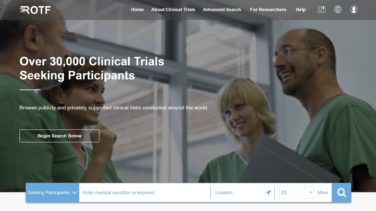Understanding the journeys of healthcare professionals and patients when prescribing and receiving treatments has never been more important. As the industry struggles to maintain the same levels of productivity in R&D as in previous years, a greater emphasis than ever is being placed on providing an accurate estimation of demand and prescription trends.
Choose a Methodology
The first and most important part of the process of developing a realistic estimation of demand is to select the right methodology. The choice will depend on both the product in development and the market in which it will launch. Some degree of trade-off will always be required when making this decision—between a wide scope and a high level of detail. The more known about the product and the market, the more focused and detailed the demand assessment can be.
In practical terms, this means understanding the specific objective of the research. If the basis for the work is to understand the impact of potential new products on the market and how that could influence future prescribing choices, then a calibrated choice-based conjoint approach would be suitable. A conjoint design enables the creation of hypothetical products that could be available for prescription in the future, and the physician could be asked if they would offer such products to certain key patient types. This methodology could be chosen because it allows for the differentiation of the impact of different attributes that could be associated with a product, and to understand the impact of these attributes on prescribing decisions.
Consider Prescription Decisions at the Patient Level
By focusing on the patient, it is possible to present the doctor with a realistic task by asking them a question on a decision that they would make on a day-to-day basis. In this manner, it is possible to generate more real-world data that can provide a more accurate demand assessment. Through patient-level decisions, researchers can learn what products a patient was previously taking and which products they would be receiving in the future. Creating and gathering these data can be achieved by asking essentially three different types of questions.
- The first is based on fixed patient types, which is most widely used, and involves asking what kind of action would be typically taken for a particular kind of patient. An example methodology would be to run a conjoint study, where the doctor is asked to respond to product variations for three or four different types of patients.
- The second type is natural variation, where the respondent would be asked to complete patient record forms and ask their likelihood to prescribe a new product to these patients. This methodology is angled towards attaining information that is as close to real-world data as possible.
- The last type is called forced variation, which is an approach aimed at understanding a broad range of different patient characteristics to learn where a new product could fit into that positioning. In this approach, patient record forms could be used or pseudo-patient record forms can be created using a conjoint design. Through this method, a doctor can be prompted with a range of different kinds of patients.
Leveraging Gamification
When estimating peak share, it is important to have a realistic patient decision, but it is just as necessary to have a realistic setup of the future market. If a respondent is focusing on their current prescribing behavior, then it is not possible to gain a true understanding of the situation in a future market. It is here that gamification can be used to fully engage the healthcare professionals in the questionnaire. Gamification can be realized in various ways, such as through using visual techniques to understand familiarity and by tailoring questions and response answers to the key topics of interest.
This can also be achieved through a “journey to the future.” In this approach, researchers build up an image of what the future might look like and then ask the doctor to think about what the future world would mean to them. For example, they provide examples of four new products and ask physicians how they would react if the market looked a certain way. Researchers can take them through each of the new products, and introduce them to each product profile. At this point, they can ask them how their prescription share would change based on the differing profiles. The questionnaire can also be interspersed with short “future world” news articles, which is about building engagement and ensuring the physician is thinking in a more imaginative way.
Demand Calibration
For any demand assessment research, demand calibration is necessary to ensure that overstatement does not distort market estimation. Often, this process is a proprietary “black box” technique, which sometimes makes it difficult for pharma market researchers to understand how to reach a calibrated figure.
However, a “glass box” approach is preferable as it ensures transparency for the pharma market researchers and brand teams. The way to do this is to use a gated methodology, which is essentially a respondent-level likelihood approach. In this way, researchers can look at each respondent’s data and assess whether they are likely to adopt a new product. The basics of this approach involve asking respondents to try to consider the different costs of adopting a new product and whether they are likely to encourage their patients to adopt this new product. At the respondent level, this is used to understand whether the respondent would go ahead and prescribe a product, which then gives an indication of a discount that can be applied at this level. In turn, this provides a calibrated preference share.
Conclusion
Market research is the foundation for improved sales and planning appropriately for the launch of a new product to ensure its success. Perhaps more significant is the opportunity to learn what is actually driving decision-making, and these methodologies make this possible when carrying out real-world demand assessments. The right skills, industry knowledge, and methodology should be seen as integral to optimizing brand performance.










